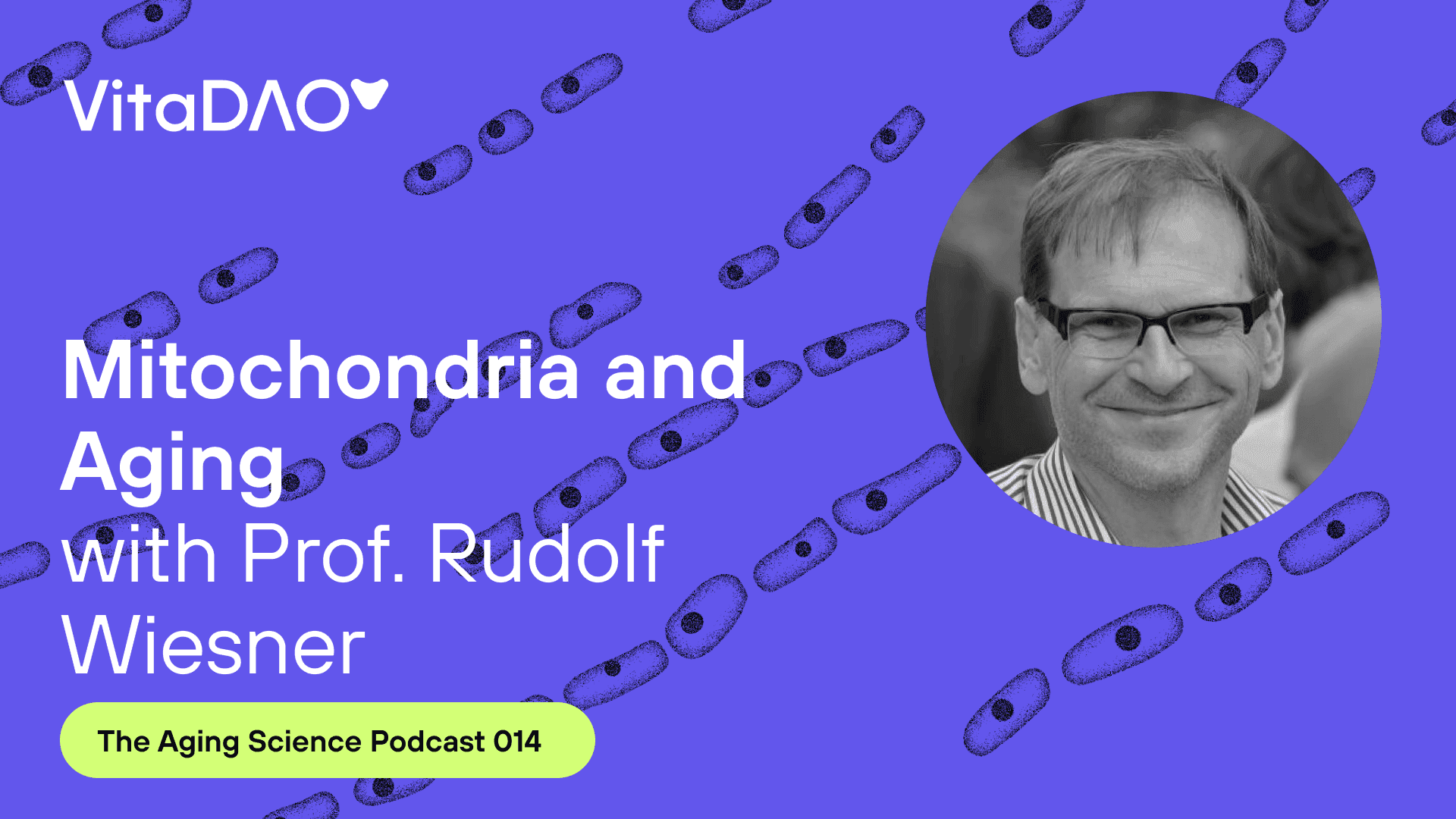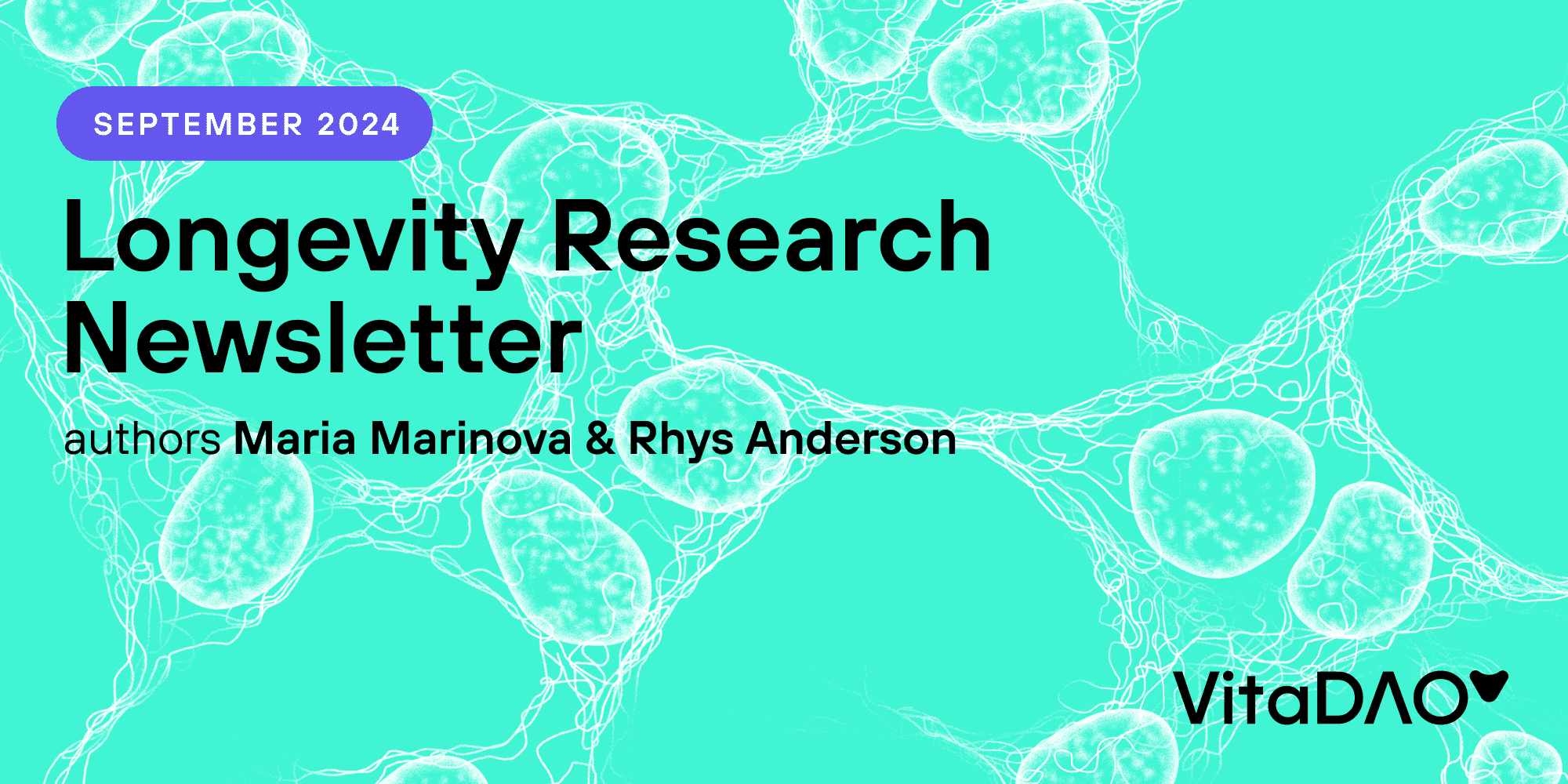
Mitochondria and Aging with Prof. Rudolf Wiesner - VitaDAO Aging Science Podcast


In this podcast with Prof. Rudolf Wiesner we talked about the lack of long-term positions at German universities, mitochondria derived vesicles, mitochondrial mutation rates, TWINKLE, the adrenal medulla and mitochondrial quality control more broadly. I would not have expected the adrenal glands to be so important in mitochondrial aging, although in hindsight it should have been obvious why they are.
Prof. Rudolf Wiesner — brief bio
To quote from the CECAD webpage: “The group’s goal is to understand in detail how mitochondrial damage — in particular damage caused by mitochondrial DNA deletions — arises and how it leads to organ dysfunction by failure of single cells in a tissue. The aim is to develop therapeutic approaches to slow the process.”
“Mitochondria contain their own DNA molecules. The mutations that accumulate in many organs, such as the heart, brain and muscle, are mainly deletions, where a part of the DNA strand is missing. These deletions are not evenly distributed — few individual cells show massive accumulation, which leads to a loss of function of those cells. A mosaic of normal and heavily impaired cells develops. This process is accelerated in many aging-associated diseases, such as Parkinson’s disease or cardiac arrhythmia. The group investigates how these mutations arise, why they accumulate in individual cells, and how they influence tissue function.”
https://www.cecad.uni-koeln.de/research/principal-investigators/associated-members/rudolf-j-wiesner
Mitochondria — multifaceted players in aging
These organelles are often called the powerhouse of the cell but, apart from being cliched, this metaphor does not do them justice. If we want to stick with an “industrial” metaphor, the mitochondria are maybe like a manufacturing plant, a port, a power plant and a minor geopolitical center all in one. Given the complex responsibilities of mitochondria it should not come as a surprise that they have diverse failure modes during aging.
For example, during aging we see clonal expansion of point mutations and deletions which leads to tissue mosaicism, meaning that one and the same tissue ends up having stretches of totally different, often more or less dysfunctional, mitochondrial populations.
There is also the classic mitochondrial (mt) free radical theory of aging. In one more modern interpretation of this theory, production of radical oxygen species (ROS) at mitochondria is a constant source of macromolecular damage irrespectively of whether this mtROS production increases with aging or not. This is consistent with and supported by findings of reduced mtROS production (Lambert et al. 2007) and higher membrane lipid stability in long-lived species.
In some aging tissues we observe reduced mitochondrial mass and decreased mitochondrial biogenesis (1). Based on this we would expect increased mitochondrial biogenesis to improve healthspan or lifespan, and, indeed, PGC1a is consistently upregulated in long-lived rodents and overexpression of this gene extends fly lifespan (Tyshkovskiy et al. 2019, Ozkurede et al. 2019, Rera et al. 2011).
Although we do observe decreased mitochondrial mass in some tissues, in other tissues there may be a vicious cycle of defective mitochondria that proliferate out of hand. The latter is a theory which is bolstered by the work of Aiken and McKenzie (Herbst et al. 2022) as well as work by Prof. Doug Turnbull from Newcastle (Vincent et al. 2018).
Some other theories suggest that aging mitochondria lead to increased susceptibility to cell death, and that the mitochondrial network becomes disorganized with impaired fusion-fission dynamics.
And this is just a small sample of mitochondrial aging theories!
What is mitochondrial respiratory chain and electron transport chain (ETC) dysfunction?
In the podcast we talk a lot about ETC-negative cells or ETC-deficiency. By that we mean electron transport chain deficiency. ETC-deficient cells are those that have lost the ability to utilize oxygen for mitochondrial respiration via their ETC and now rely on glycolysis instead.
This is also reflected by the lack of a certain protein, which is called cytochrome C oxidase. This state is also termed COX deficiency and can be visualized by a histologic staining that gives a blue readout. Usually, although not always, mtDNA deletions or mutations will be the cause of this COX- and ETC-deficiency.
Which tissues suffer the most from mitochondrial DNA deletions and why?
We discuss why some tissues accumulate more mtDNA deletions than other tissues. What these tissues have in common is often a source of substantial oxidative stress. This is the case for the adrenal medulla and the substantia nigra, which both accumulate large amounts of mtDNA deletions. The adrenal glands are involved in the metabolism of adrenaline, as the name implies, which is structurally related to dopamine (both are catecholamines). The metabolism of dopamine is known to promote the formation of toxic intermediate products that can harm the mtDNA in the brain so it should be no surprise that metabolism of adrenaline is also problematic.
The group of Rudolf Wiesner discovered these abnormalities in mice carrying a relatively mild mutation in a protein that is involved in mitochondrial maintenance, called TWINKLE. It stands to reason that humans will show the same defects during aging, although this awaits confirmation. Mild TWINKLE mutants are generally considered a decent model of age-related mtDNA deletion formation.
“it’s scary if you look at an old adrenal gland…it looks like.. it is completely destroyed full with cells that have a mitochondrial defect.” (Rudolf Wiesner)
We both agreed that it would be useful to perform more autopsy studies of very long-lived individuals, as we still know little about tissue specific pathologies of the very old. To paraphrase:
“good old fashioned descriptive biology is always the basis to find something new”
Can we cure mitochondrial disease?
I asked an intentionally provocative question on this podcast that I like to pose in the context of mitochondrial research. Some time ago I went to a longevity conference, where I saw a talk by Dr. Anu Suomalainen-Wartiovaara, a respected mitochondrial expert talking about her work. During her talk she said that she wants to cure mitochondrial disease. Of course, no one disagreed nor batted an eye.
What I found rather puzzling about this was that people (working outside of our field) would be surprised, even upset, if an aging researcher said they wanted to cure aging or stop aging, to use less controversial language.
For a long time indeed, it was impossible for a respected longevity researcher to say, or to admit, that eventually, down the line, someday, they really would like to stop all aging. End it for good. Luckily this is finally changing, but not fast enough for my liking.
Curing mitochondrial disease is a far-fetched dream, but if mitochondrial researchers are allowed to dream, so are we.
If you ask me, we should all follow in the footsteps of Anu and boldly say that we want to end or reverse aging. If she can say so about her condition of choice, we are allowed as well.
References and further reading
Herbst, Allen, et al. “Age-and time-dependent mitochondrial genotoxic and myopathic effects of beta-guanidinopropionic acid, a creatine analog, on rodent skeletal muscles.” Geroscience (2022): 1–13.
Ozkurede, Ulas, and Richard A. Miller. “Improved mitochondrial stress response in long‐lived Snell dwarf mice.” Aging Cell 18.6 (2019): e13030.
Tyshkovskiy, Alexander, et al. “Identification and application of gene expression signatures associated with lifespan extension.” Cell metabolism 30.3 (2019): 573–593. webpage: http://gladyshevlab.org:3838/Gentervention/
Rera, Michael, et al. “Modulation of longevity and tissue homeostasis by the Drosophila PGC-1 homolog.” Cell metabolism 14.5 (2011): 623–634.
Lambert, Adrian J., et al. “Low rates of hydrogen peroxide production by isolated heart mitochondria associate with long maximum lifespan in vertebrate homeotherms.” Aging cell 6.5 (2007): 607–618.
Vincent, Amy E., et al. “Subcellular origin of mitochondrial DNA deletions in human skeletal muscle.” Annals of neurology 84.2 (2018): 289–301.


